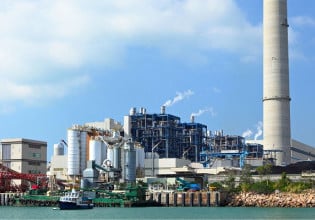What is Explosion Proof? A Look Into Control Panels and Enclosures
Why are explosion-proof devices important for industrial safety?
Safety is a primary concern when operating machinery in industrial environments.
Engineers are constantly working to improve existing standards to make machines not only more efficient, but also safer to operate, both in regular and emergency situations.
To help engineers and technicians around the world achieve this goal, The National Fire Protection Association (NFPA) started publishing the National Electric Code (NEC) in 1897.
The code, also known as NFPA 70 and ANSI/NFPA 70, defines various standards related to protection techniques that must be used when designing products intended for use in hazardous locations.
In order to be deployed in such environments, products typically need to also satisfy safety protocols established by the ATEX Directive and IECEx, an international system for certification of equipment for use in explosive atmospheres created by the International Electrotechnical Commission (IEC).
Components designed following these rules must be dust ignition proof, dust-tight, purged and pressurized, intrinsically safe, hermetically sealed and explosion-proof.
Explosion-Proof Standards
To satisfy the explosion-proof standards set out by the NEC and IEC, an enclosure must be able to contain possible explosions originating within its housing, as well as preventing sparks from the inside to ignite vapors, gases, dust, or fibers in the air surrounding it.
Explosion-proof then refers not to the ability of the enclosure to withstand an external explosion, but to contain an internal one, thus preventing internal damages to affect surrounding machinery and people.
The NEC also states that explosion-proof equipment must meet the temperature requirements of the specific application in which it is to be installed.
In other words, the operating temperature of a given device must not be greater than the lowest ignition temperature of the dust or gases in the atmosphere where the component is to be installed.

Nema IX7P Explosion Proof Starter from Franklin Controls. Image used courtesy of Franklin Controls.
Products listed as explosion-proof according to NEC are divided into use for use in Class I, Division 1 or 2 locations. Generally speaking, the equipment listed for a higher classification surpasses the requirements for lower classifications.
According to the NEC, products identified for a Division 1 location are permitted in a Division 2 location belonging to the same class, group, and temperature class.
Examples of Explosion-Proof Enclosures
One example of explosion-proof standards is shown by ADALET enclosures' products.
The company provides a broad line of explosion-proof enclosures and electrical enclosures, including junction boxes, meter housings, panelboards, and motor starters.
Adalet’s Quarter Turn Latch Terminal Enclosure, for instance, comes in Type 304 or 316L stainless steel and 13 standard sizes.

Some of ADALET’s explosion-proof enclosures. Image used courtesy of ADALET.
The terminal enclosure is compliant with both ATEX and IECEx standards and features continuous one-piece watertight silicone gasket and lift off door hinges.
ADALET also produces explosion-proof enclosures designed for use in highly corrosive areas. These are built for applications in offshore, petrochem, or volatile industrial areas.
These products belong to the company’s XCESX series of cast stainless steel explosion-proof enclosure, and are rated for Class I, Division 1/Zone 1 hazardous locations.
Products in this category feature a watertight gasket and stainless steel cover bolts for Type 4X / IP66 ratings, also stainless steel hinge kit, cover alignment device, removable lifting eye bolts, cast-on mounting lugs, and both internal and external ground screws.
Another company that designs and creates explosion-proof technology is Wattco. This company specializes in explosion-proof enclosures for industries such as oil and gas.
The company explains on its website how explosion-proof devices can be comprised of metal, aluminum, fiberglass, stainless steel, and other materials.
Franklin Control Systems is another company in the industry that designs industrial control solutions, including industrial enclosures. There are a variety of companies that specialize in similar explosion protection technology.
Why Use Explosion-Proof Technology?
When it comes to operating industrial machinery in hazardous locations, engineers have two options: they can either deploy products that are intrinsically safe or use explosion-proof ones.
Intrinsically safe equipment can be more cost-effective, which is why it is utilized by many businesses and plants.
However, products in this category usually have low voltages and currents, since they are designed not to have enough energy to arc under failure conditions. Some operations, however, require devices with higher voltages and/or currents, and this is where explosion-proof solutions are needed, even though they are typically more expensive.
In fact, equipment developed to operate in volatile environments such as this usually does not have many of these restrictions.
As long as possible explosions would be contained within the enclosure, these devices would be safe to operate, no matter the power, thus making them ideal for heavy industrial projects.
What do you think about explosion-proof devices and do you use them in your company?






